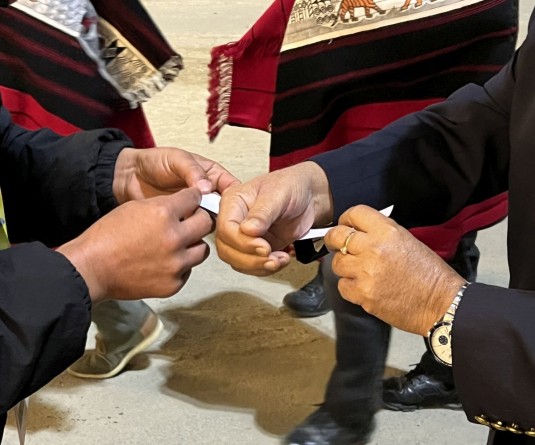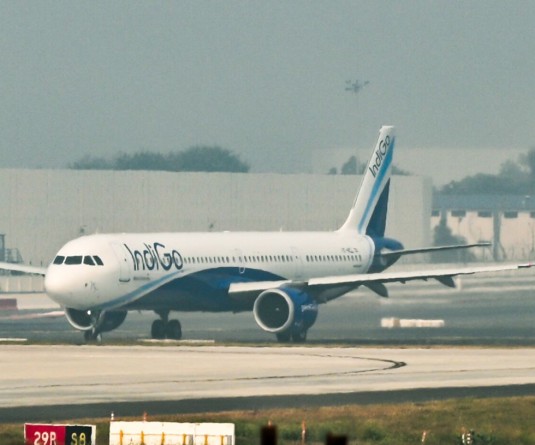
NSF Inner Line Commission submits memo to DCs
Morung Express News
Dimapur | May 30
The Naga Students Federation’s (NSF) Inner Line Regulation Commission (ILRC) informed that it has submitted a representation to the Deputy Commissioners of Dimapur and Chümoukedima districts drawing attention to the contentious Inner Line Permit (ILP) regime.
The representation was submitted to the two DCs on May 30. Addressing a press conference at the Dimapur Naga Students’ Union office in Dimapur, the commission informed that the representation was to be submitted to the Niuland DC as well. However, he said that they could not as they were not able to contact the Niuland DC.
ILRC Convenor Senchumo NSN Lotha, also a former NSF President, told the press conference that the NSF’s intention is not to confront the government but to aid the government agencies in stringently enforcing the ILP regime. He recalled that the NSF’s stand on the ILP is not a recent development. “Even as early as 1978-79, NSF had submitted a representation to the Government of Nagaland. Had the government heeded to those representations, the situation would have been far different from what is being seen today,” he claimed.
Lotha was accompanied by other members of the commission, Kelhouniezo Yhome, Seve Ringa Vadeo, and NSF Vice President, Mteisuding. Yhome is also a former NSF president.
According to him, the NSF is very firm on the issue and has decided on what he said is a “surgical approach,” focusing special attention on the three districts of Dimapur, Chümoukedima and Niuland. He held that the three districts are considered as “breeding zones for the influx of outsiders.” He held that it has resulted in a local economy dominated by non-Naga residents.
While stating that the May 30 representation will be followed up with a reminder to the government in two months time, he said that ILRC will also undertake its own ILP permit assessment, or survey.
On the question of harassment in the name of ILP enforcement, he said that the NSF is ready to assist individuals, particularly those genuinely exempted or with correct documents. He added that the process of obtaining ILP should be easy, without unnecessary harassment for legitimate visitors or residents. As per the regulation, he said that every individual, including children and students, who are not indigenous inhabitants of the state, must obtain a separate pass unless specifically exempted. Daily wage earners, who crossover from Assam, must also obtain the permit, he added.
The formation of the ILRC was announced by the NSF in March, this year, comprising of 5 members, with Senchumo NSN Lotha as the Convenor, and Kelhouniezo Yhome, Hukavi Tokheho Yepthomi, Imtiakum, and Seve R Vadeo as members. As per the NSF, ILRC’s objective is countering what it held as “the unabated inflow of illegal immigrants into our homeland.”
Cut-off year
The ILRC asserted that the cut-off year for residency should be December 1, 1963, the date Nagaland became a state of India. It rejected any government-proposed cut-off between 1963 and 1979.
According to the ILRC Convenor, Nagaland is a “unique state,” born out of the Naga political movement, and that this status should be respected.
Sensitisation
He called for wider and greater sensitisation of all, including the ones who are required to possess the ILP as well as the enforcement personnel. He said that there should be no misconceptions about the ILP, stating that the same regulation applies in other states like Arunchal Pradesh and Mizoram.
What the NSF wants to know
• How many ILPs have been issued since the September 2024 notification?
• What enforcement methods are in place for ILP in your district?
• What mechanisms are used to detect outsiders residing without permits?
• Have there been any surprise ILP checks? If so, what were the outcomes?
• How is ILP enforcement handled for day visitors (those who come in the morning and leave in the evening)?
• What documents are required from ILP applicants?
• What responsibilities are assigned to guarantors before an ILP is issued?
• Have any applications been rejected? If yes, how many?
• What monitoring is in place to ensure compliance after ILP issuance?




.jpg)

